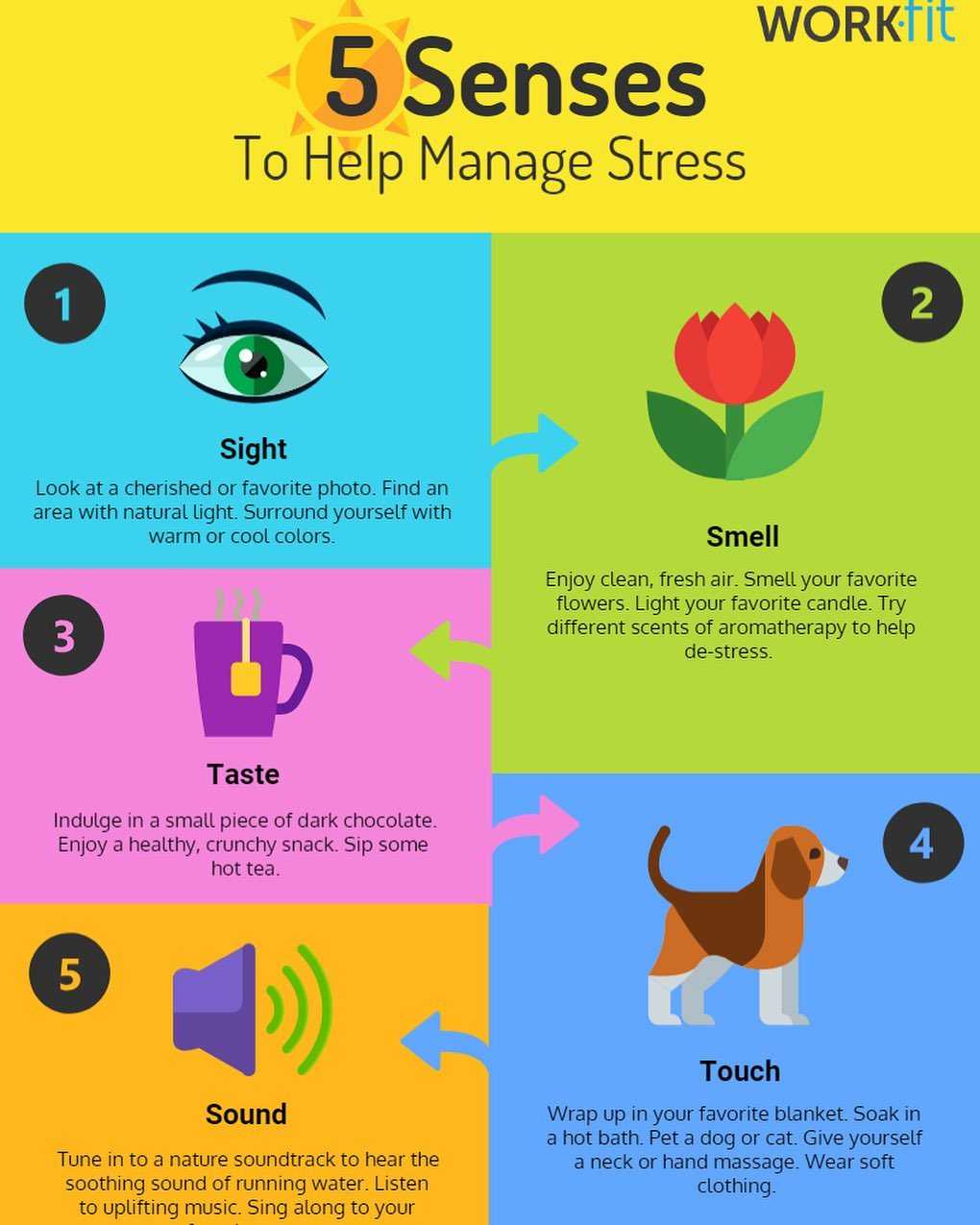In the midst of life’s challenges, stress has become a prevalent part of our daily lives, affecting our mental, emotional, and physical well-being. While stress is a natural response to demanding situations, managing it effectively is crucial to prevent its detrimental effects on our health.
One often-overlooked yet powerful tool that we possess for stress management is our breath. Breathing, an involuntary process that sustains life, plays a profound role in modulating our stress response. Understanding how breathing works to influence stress and learning specific breathing exercises can be transformative in promoting relaxation, reducing anxiety, and improving overall well-being.
As we delve into this article, we will explore the intricate connection between breathing and stress, uncovering the mechanisms through which conscious control over our breath can influence our physical and mental responses to stressors. Moreover, we will provide practical breathing exercises that can be easily incorporated into daily life to enhance stress management and promote a sense of calm and resilience.
What Role Does Breathing Play in Managing Stress?
Our breath holds immense power in influencing our stress response. Here are five key points highlighting the profound impact of breathing on stress management:
- Stress-Response Regulator: Breathing patterns directly affect the activation of our stress response system.
- Autonomic Nervous System Balancer: Conscious control over breath can shift the balance between sympathetic (stress-inducing) and parasympathetic (relaxation-promoting) nervous system activities.
- Heart Rate and Blood Pressure Moderator: Slow, deep breathing can lower heart rate and blood pressure, promoting a sense of calm.
- Mind-Body Connection: Breathing exercises bridge the gap between our physical and mental states, facilitating relaxation and reducing anxiety.
- Emotional Regulator: Focused breathing techniques can help manage emotions, alleviate stress, and cultivate resilience.
By understanding the intricate connection between breathing and stress, we can harness the power of our breath to effectively manage stress, promote relaxation, and enhance overall well-being.
Stress-Response Regulator: Breathing patterns directly affect the activation of our stress response system.
Our breath serves as a powerful regulator of our stress response system. When we experience stress, our breathing patterns often become shallow and rapid, a natural response aimed at preparing our bodies for action. This type of breathing, however, can exacerbate stress and anxiety.
- Sympathetic Nervous System Activation: Rapid, shallow breathing stimulates the sympathetic nervous system, responsible for our “fight-or-flight” response. This can lead to increased heart rate, elevated blood pressure, and heightened muscle tension, all of which contribute to the physical and emotional symptoms of stress.
- Parasympathetic Nervous System Inhibition: Shallow breathing also inhibits the parasympathetic nervous system, which is responsible for promoting relaxation and rest. This imbalance between the sympathetic and parasympathetic nervous systems can perpetuate stress and make it difficult to return to a state of calm.
- Brain-Body Communication: Breathing patterns directly communicate with the brain regions involved in stress regulation. Slow, deep breathing signals the brain to activate the parasympathetic nervous system, promoting relaxation and reducing the activity of the stress response system.
- Emotional Regulation: Conscious control over breathing can help regulate emotions. Focusing on slow, deep breaths can help calm the mind, reduce anxiety, and promote a sense of emotional balance.
By understanding the connection between breathing patterns and the stress response system, we can use breathing exercises as a powerful tool to manage stress, promote relaxation, and enhance our overall well-being.
Autonomic Nervous System Balancer: Conscious control over breath can shift the balance between sympathetic (stress-inducing) and parasympathetic (relaxation-promoting) nervous system activities.
The autonomic nervous system (ANS) is responsible for regulating many involuntary bodily functions, including heart rate, blood pressure, digestion, and breathing. It consists of two branches: the sympathetic nervous system and the parasympathetic nervous system.
- Sympathetic Nervous System: The sympathetic nervous system is responsible for the body’s “fight-or-flight” response. When activated, it increases heart rate, blood pressure, and breathing rate, diverting blood flow to muscles and preparing the body for physical exertion or danger.
- Parasympathetic Nervous System: The parasympathetic nervous system, on the other hand, is responsible for the body’s “rest-and-digest” response. When activated, it slows heart rate, blood pressure, and breathing rate, promoting relaxation, digestion, and restoration of energy.
- Imbalance and Stress: In today’s fast-paced world, many people experience chronic activation of the sympathetic nervous system due to prolonged stress. This imbalance can lead to a range of health problems, including anxiety, insomnia, and digestive issues.
- Conscious Breathing: Consciously controlling our breath can help shift the balance between the sympathetic and parasympathetic nervous systems. Slow, deep breathing activates the parasympathetic nervous system, promoting relaxation and reducing the activity of the stress response system.
By practicing breathing exercises that focus on slow, deep breaths, we can actively counteract the effects of stress on the body and mind, promoting a sense of calm and well-being.
Heart Rate and Blood Pressure Moderator: Slow, deep breathing can lower heart rate and blood pressure, promoting a sense of calm.
The heart and circulatory system are significantly influenced by our breathing patterns. When we experience stress, our breathing often becomes shallow and rapid, which can lead to an increase in heart rate and blood pressure.
Slow, deep breathing, on the other hand, has the opposite effect. It activates the parasympathetic nervous system, which triggers the body’s “rest-and-digest” response. This leads to a decrease in heart rate and blood pressure, promoting a sense of calm and relaxation.
The mechanism behind this effect is related to the baroreflex, a natural feedback system that helps regulate blood pressure. When blood pressure rises, the baroreflex triggers a decrease in heart rate and constriction of blood vessels, which helps to lower blood pressure. Slow, deep breathing stimulates the baroreflex, leading to a reduction in heart rate and blood pressure.
Additionally, slow, deep breathing helps to reduce the levels of stress hormones, such as cortisol and adrenaline, which can contribute to high blood pressure and heart rate. By lowering stress hormone levels, slow, deep breathing promotes a more relaxed and calm state, further contributing to lower heart rate and blood pressure.
Incorporating slow, deep breathing exercises into daily life can be a simple yet effective way to manage stress and its associated effects on the heart and circulatory system, promoting overall cardiovascular health and well-being.
Mind-Body Connection: Breathing exercises bridge the gap between our physical and mental states, facilitating relaxation and reducing anxiety.
The mind and body are deeply interconnected, and our breath serves as a powerful bridge between the two. Breathing exercises can influence our physical and mental states, promoting relaxation and reducing anxiety.
- Physiological Effects: Slow, deep breathing triggers a cascade of physiological changes that promote relaxation. It activates the parasympathetic nervous system, which slows heart rate, lowers blood pressure, and reduces muscle tension. Additionally, deep breathing helps to increase oxygen levels in the blood, which can have a calming effect on the mind.
- Psychological Effects: Focused breathing exercises can help to calm the mind and reduce anxiety. By focusing on the breath, we can bring our attention to the present moment and away from worries and distractions. Deep breathing also helps to regulate emotions by reducing the activity of the amygdala, a brain region involved in fear and anxiety.
- Mind-Body Integration: Breathing exercises promote mind-body integration by creating a sense of coherence between our physical and mental states. When we breathe deeply and slowly, we are essentially sending a signal to our body that we are safe and relaxed. This can help to break the cycle of stress and anxiety and promote a sense of inner peace and well-being.
- Meditation and Mindfulness: Many breathing exercises are rooted in meditation and mindfulness practices. These practices involve paying attention to the breath and using it as an anchor to bring the mind into the present moment. By cultivating awareness of the breath, we can learn to respond to stress and anxiety with greater awareness and resilience.
Incorporating breathing exercises into daily life can help to strengthen the mind-body connection and promote a sense of calm, focus, and emotional well-being, making it a valuable tool for managing stress and anxiety.
Emotional Regulator: Focused breathing techniques can help manage emotions, stress, and resilience.
Our breath is closely linked to our emotional state. When we experience strong emotions, such as stress or anxiety, our breathing patterns can become shallow and rapid. Focused breathing techniques can help to regulate emotions by calming the nervous system and bringing the body and mind into a more balanced state.
- Calming the Nervous System: Focused breathing activates the parasympathetic nervous system, which is responsible for relaxation and rest. By slowing down the breath and focusing on deep, diaphragmatic breathing, we can signal to the body to relax and reduce the physical and mental effects of stress and anxiety.
- Managing Stress: Focused breathing techniques can help to manage stress by reducing the levels of stress hormones, such as cortisol and adrenaline. When we breathe deeply and slowly, we stimulate the release of endorphins, natural mood boosters that can help to counteract the negative effects of stress.
- Regulating Emotions: Focused breathing can also help to regulate emotions by reducing the activity of the amygdala, a brain region involved in fear and anxiety. By calming the amygdala, deep breathing can help to reduce emotional reactivity and promote a more balanced emotional state.
- Building Resilience: Regular practice of focused breathing techniques can help to build resilience to stress and adversity. By learning to manage emotions and stress through breathing, individuals can develop a greater capacity to cope with challenges and bounce back from setbacks.
Incorporating focused breathing techniques into daily life can be a powerful tool for emotional regulation, stress management, and resilience building, contributing to overall mental and emotional well-being.
FAQ
To further explore the role of breathing in stress management, let’s address some frequently asked questions:
Question 1: How can I use breathing to calm down when I’m feeling stressed?
Answer: When stress hits, try the 4-7-8 breathing technique. Inhale deeply through your nose for 4 seconds, hold your breath for 7 seconds, and exhale slowly through your mouth for 8 seconds. Repeat this cycle several times until you feel calmer.
Question 2: Why does slow, deep breathing help to reduce stress?
Answer: Slow, deep breathing activates the parasympathetic nervous system, which promotes relaxation and reduces the body’s stress response. It also helps to lower heart rate and blood pressure, and can help to bring the mind into a more focused and present state.
Question 3: How often should I practice breathing exercises for stress management?
Answer: Regular practice is key. Aim for at least 5-10 minutes of focused breathing exercises each day. Even a few minutes of deep breathing can make a noticeable difference in reducing stress levels.
Question 4: Can breathing exercises help with anxiety?
Answer: Yes, focused breathing techniques can be helpful in managing anxiety. By calming the nervous system and reducing stress hormones, breathing exercises can help to alleviate symptoms of anxiety and promote a sense of calm and well-being.
Question 5: Are there any specific breathing exercises that are particularly effective for stress relief?
Answer: Several breathing exercises can be effective for stress relief, including diaphragmatic breathing, alternate nostril breathing, and box breathing. Experiment with different techniques to find what works best for you.
Question 6: Can breathing exercises help to improve sleep quality?
Answer: Yes, practicing relaxation breathing techniques before bedtime can help to promote sleep and improve sleep quality. Deep breathing can help to reduce stress and anxiety, which can interfere with sleep.
Remember, incorporating breathing exercises into your daily routine can be a simple yet powerful way to manage stress, improve emotional well-being, and enhance overall health.
Now that we’ve explored some common questions about breathing and stress management, let’s delve into some practical tips for incorporating breathing exercises into your daily life and reaping the benefits of mindful breathing.
Tips
Incorporating breathing exercises into your daily routine can be a simple yet transformative way to manage stress and improve overall well-being. Here are a few practical tips to get you started:
Tip 1: Start Small: Begin with a few minutes of focused breathing each day. Even a short practice can make a noticeable difference in reducing stress levels. Gradually increase the duration of your breathing exercises as you become more comfortable.
Tip 2: Find a Quiet Space: Choose a quiet and comfortable place where you won’t be disturbed. This could be a corner of your bedroom, a park bench, or even your car during a break. Creating a dedicated space for your breathing practice can help you relax and focus more easily.
Tip 3: Experiment with Different Techniques: There are many different breathing exercises to choose from. Try diaphragmatic breathing, alternate nostril breathing, or box breathing to find what works best for you. Experiment with different techniques until you discover one that you enjoy and find effective.
Tip 4: Be Consistent: Regular practice is key to reaping the benefits of breathing exercises. Make breathing exercises a part of your daily routine, just like brushing your teeth or exercising. Consistency will help you develop a stronger mind-body connection and experience lasting stress reduction.
Remember, incorporating breathing exercises into your daily routine is a journey, not a race. Be patient with yourself and enjoy the process of learning and growing your breathing practice.
As you consistently practice breathing exercises and incorporate them into your daily life, you’ll discover a deeper sense of calm, resilience, and well-being. Breathing exercises are a powerful tool for stress management, empowering you to navigate life’s challenges with greater ease and inner peace.
Conclusion
In today’s fast-paced world, stress has become an unavoidable part of life. However, by understanding the profound impact of breathing on our stress response, we can harness the power of our breath to effectively manage stress and promote well-being.
Breathing exercises are a simple yet powerful tool that can help us regulate our nervous system, calm our minds, and manage our emotions. By incorporating focused breathing techniques into our daily routine, we can cultivate a greater sense of resilience, inner peace, and overall well-being.
Remember, stress management is an ongoing journey. Be patient with yourself and embrace the process of learning and growing your breathing practice. Over time, you’ll discover a deeper connection to your breath and a newfound ability to navigate life’s challenges with greater ease and inner strength.
So, take a deep breath, relax, and embark on this journey of mindful breathing. Embrace the transformative power of your breath, and unlock the key to a more balanced and fulfilling life.
Images References :

Woody Beck, a happy parents with two kids.


